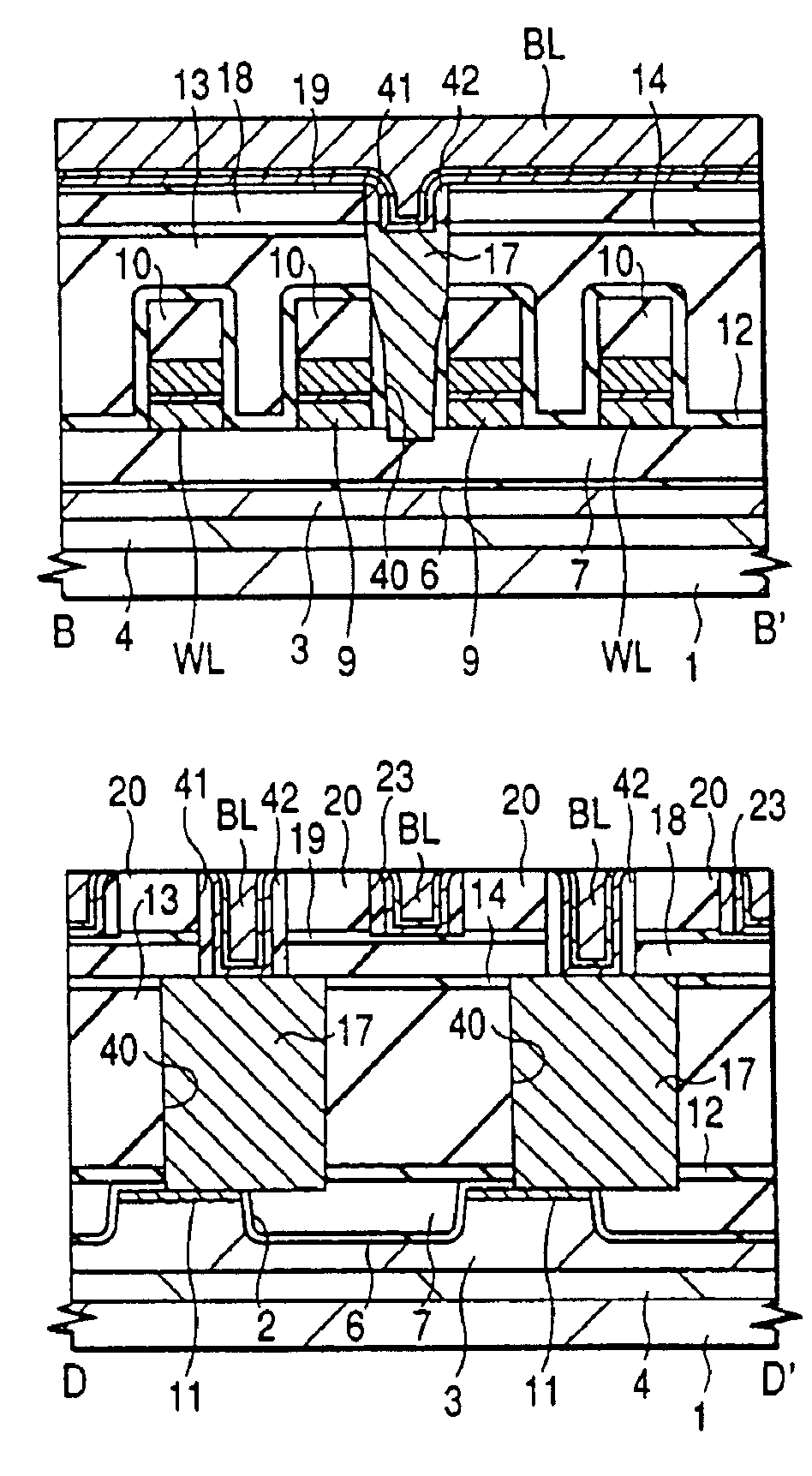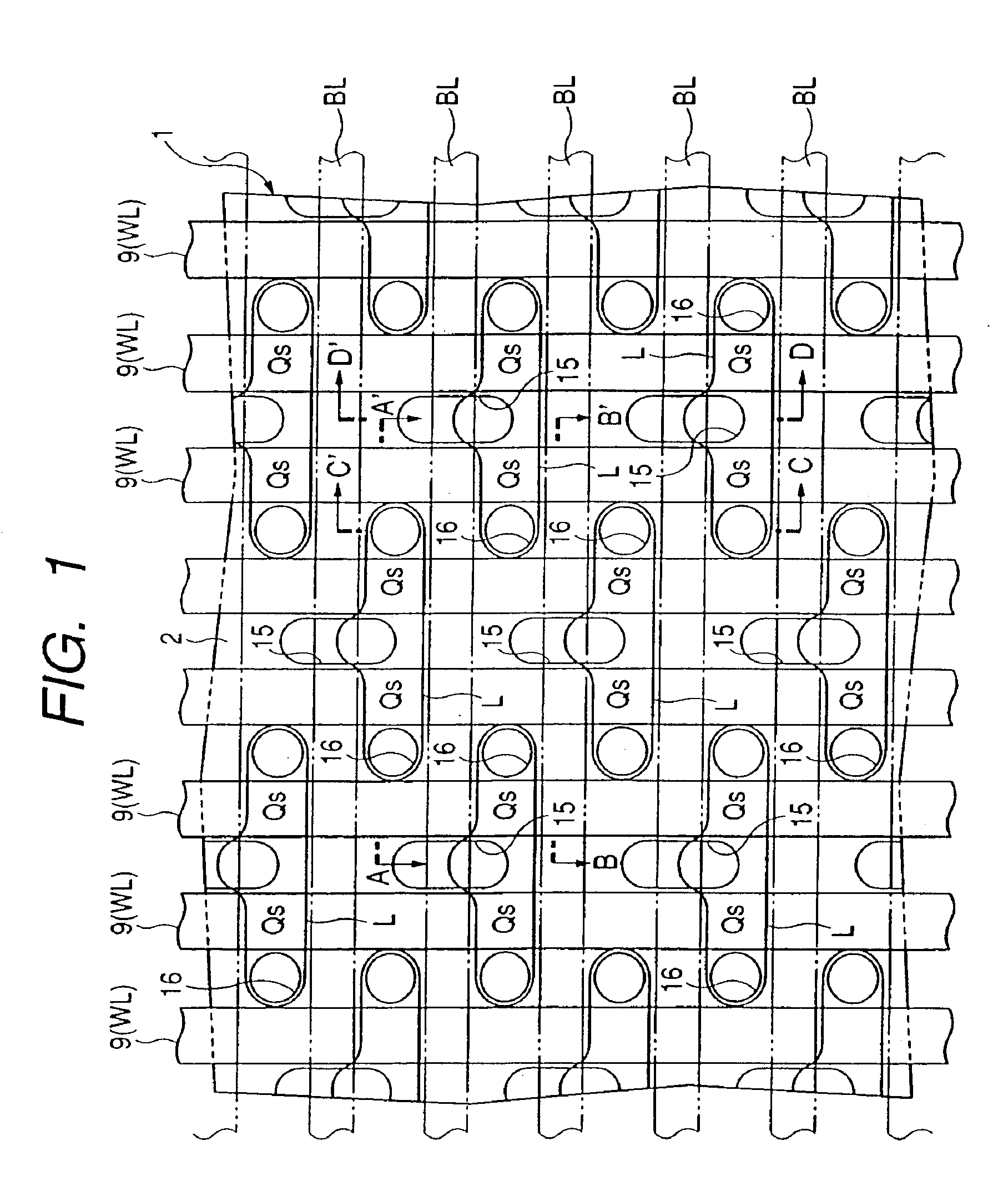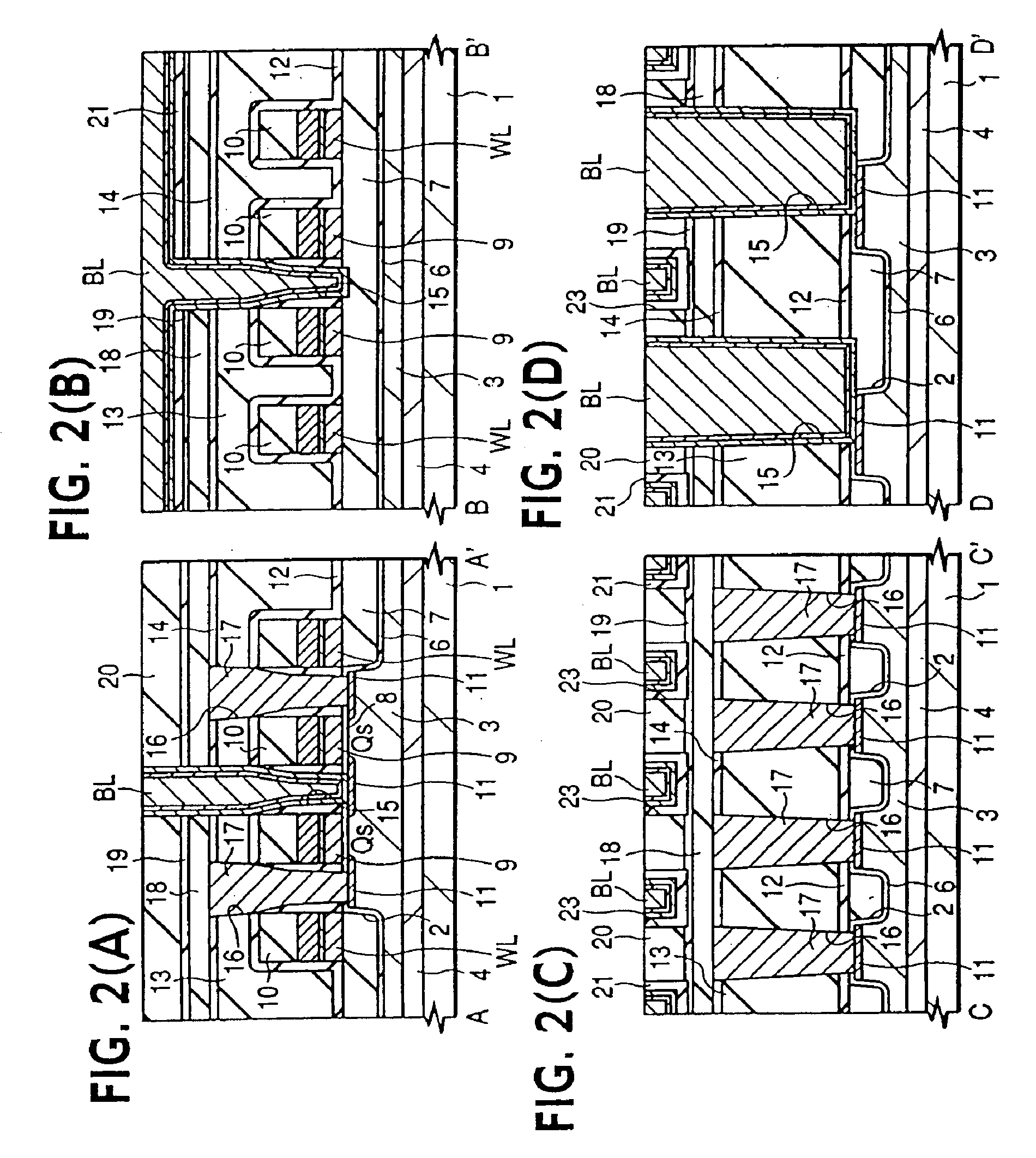Semiconductor integrated circuit device and the process of manufacturing the same for reducing the size of a memory cell by making the width of a bit line than a predetermined minimum size
a technology of integrated circuit and memory cell, which is applied in the direction of semiconductor devices, electrical devices, transistors, etc., can solve the problems of increasing the parasitic capacitance difficult to ensure, short circuit, etc., and achieves the reduction of the stability of the bit line, the effect of high accuracy and reduced photoresist film siz
- Summary
- Abstract
- Description
- Claims
- Application Information
AI Technical Summary
Benefits of technology
Problems solved by technology
Method used
Image
Examples
embodiment 2
4]FIG. 29(A) through FIG. 29(D) are cross-sectional views showing a step of the method of manufacturing a DRAM of embodiment 2 as seen along lines A-A′; B-B′; C-C′ and D-D′; respectively, in FIG. 1.
[0085]FIG. 30(A) through FIG. 30(D) are cross-sectional views showing a step of the method of manufacturing a DRAM of embodiment 2 as seen along lines A-A′; B-B′; C-C′ and D-D′; respectively, in FIG. 1.
[0086]FIG. 31(A) through FIG. 31(D) are cross-sectional views showing a step of the method of manufacturing a DRAM of embodiment 2 as seen along lines A-A′; B-B′; C-C′ and D-D′, respectively, in FIG. 1.
embodiment 3
[0087]FIGS. 32(A) and 32(B) are cross-sectional views showing a step of the method of manufacturing a DRAM of embodiment 3 in accordance with the present invention.
[0088]FIGS. 33(A) and 33(B) are cross-sectional views showing a step of the method of manufacturing a DRAM of embodiment 3 in accordance with the present invention.
[0089]FIGS. 34(A) and 34(B) are cross-sectional views showing a step of the method of manufacturing a DRAM of embodiment 3 in accordance with the present invention.
[0090]FIGS. 35(A) and 35(B) are cross-sectional views showing a step of the method of manufacturing a DRAM of embodiment 3 in accordance with the present invention.
[0091]FIGS. 36(A) and 36(B) are cross-sectional views showing a step of the method of manufacturing a DRAM of embodiment 3 in accordance with the present invention.
[0092]FIGS. 37(A) and 37(B) are cross-sectional views showing a step of the method of manufacturing a DRAM of embodiment 3 in accordance with the present invention.
[0093]FIGS. 3...
embodiment 1
[0097](Preferred Embodiment 1)
[0098]FIG. 1 is a plan view of an essential portion of a substrate showing a memory cell in the process of manufacturing a DRAM representing a preferred embodiment 1 in accordance with the present invention, and FIG. 2(A) through FIG. 2(D) are cross-sectional views of an essential portion of the substrate. In this connection, the FIG. 2(A) is a cross-sectional view taken on a line A-A′ in FIG. 1. FIG. 2(B) is a cross-sectional view taken on a line B-B′ in FIG. 1. FIG. 2(C) is a cross-sectional view taken on a line C-C′ in FIG. 1, and FIG. 2(D) is a cross-sectional view taken on a line D-D′ in FIG. 1.
[0099]On the main surface of a substrate 1 made of a p-type single crystal silicon, for example, there is formed a p-type well 3, and on the p-type well 3 there is formed active-regions L, the periphery of each of which is defined by a device isolating trench 2. As shown in FIG. 1, the active region L is formed in a plan pattern shaped as an inverted letter ...
PUM
 Login to View More
Login to View More Abstract
Description
Claims
Application Information
 Login to View More
Login to View More - R&D
- Intellectual Property
- Life Sciences
- Materials
- Tech Scout
- Unparalleled Data Quality
- Higher Quality Content
- 60% Fewer Hallucinations
Browse by: Latest US Patents, China's latest patents, Technical Efficacy Thesaurus, Application Domain, Technology Topic, Popular Technical Reports.
© 2025 PatSnap. All rights reserved.Legal|Privacy policy|Modern Slavery Act Transparency Statement|Sitemap|About US| Contact US: help@patsnap.com



